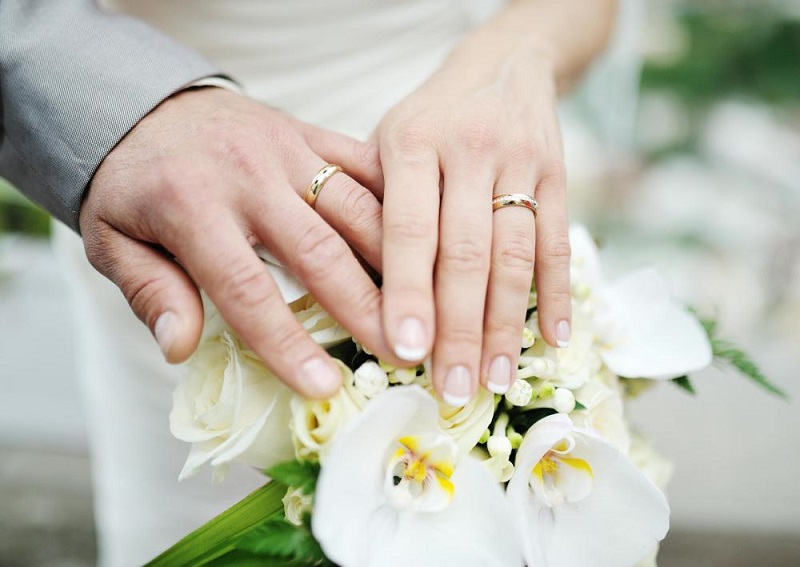When planning a wedding, there are countless decisions, from choosing the perfect venue to selecting the most exquisite floral arrangements. However, photography is one aspect of your wedding that should never be overlooked. Wedding photos are not merely pictures; they’re tangible memories that capture the essence of your special day, preserving it for generations to come.
Setting the Stage for Perfect Memories
Your wedding day is a once-in-a-lifetime event; capturing its magic requires thoughtful planning. The photographs will illuminate the emotions, laughter, tears, and joy that filled the air. Therefore, the significance of these visual records cannot be overstated.
Why Thoughtful Planning Matters
Before the shutter clicks, thoughtful planning is essential. This begins with creating your vision for the photoshoot. Your vision encompasses everything from the style and theme of the photography to the specific moments you want immortalized in print.
Creating Your Vision: Preparing for the Photoshoot
Defining Your Style and Theme
Every couple has a unique story to tell, and your wedding photos should reflect that. Determine whether you envision a traditional, contemporary, vintage, or artistic style. This choice will guide various elements of the photo shoot, including posing, lighting, and editing.
Choosing the Right Photography Style
Wedding photography is an art in various styles: photojournalistic, classic, cinematic, and more. Research these styles to find the one that resonates with your preferences. Each style offers a distinct perspective on capturing your special day.
Scouting the Ideal Locations
The backdrop of your photos is crucial in setting the mood. Whether you’re drawn to natural landscapes, urban architecture, or the intimacy of an indoor setting, your chosen locations will contribute to the overall narrative of your wedding album.
Choosing the Right Photographer
Your photographer is not merely a person behind the camera; they’re your storyteller. Research photographers who specialize in wedding photography and align with your preferred style. Review their portfolios to see if their work resonates with you.
Researching and Reviewing Portfolios
A photographer’s portfolio is a window into their expertise. Examine their previous wedding projects to gauge their skill in capturing candid moments, group shots, and the intricate details that make each wedding unique.
Scheduling Consultations: What to Ask
Meeting potential photographers in person or virtually is crucial. Prepare a list of questions covering their experience, photography approach, and availability. Their answers will help you determine if they’re the right fit for your vision.
Confirming Availability and Pricing
Once you’ve found a photographer whose style and personality align with your vision, confirm their availability for your wedding date. Discuss pricing openly to ensure it fits within your budget.
Crafting a Comprehensive Shot List
Detail is key. Collaborate with your photographer to create a shot list that outlines the must-have moments. This list will guide your photographer, ensuring they capture every significant aspect of your wedding day.
Capturing Key Moments: Ceremony and Reception
Incorporating Must-Have Group Shots
Group shots are more than faces together; they’re a snapshot of the relationships that surround you. Plan group shots that include family, bridal party, and close friends.
Candid Moments: The Heart of Wedding Photos
While posed shots are important, candid moments are special in every album. These unscripted moments capture genuine emotions, laughter, and the unexpected gems that make your wedding day truly yours.
Timeline Coordination: Ensuring Seamless Coverage
Your wedding day is a whirlwind of events. Coordinate with your photographer to ensure they’re present during crucial moments, from getting ready to the last dance.
Aligning Photography with Your Schedule
Factoring in Travel and Venue Transitions
Transitions between locations offer unique photo opportunities. Consider travel time and how it affects the overall schedule to ensure your photographer is ready to capture each moment.
Engagement Photos: A Sneak Peek into Your Story
Leveraging Engagement Sessions Effectively
Engagement sessions are a great way to get comfortable in front of the camera and build rapport with your photographer. These sessions often result in stunning photos that can be used for invitations or displays at the wedding.
Telling Your Narrative through Prewedding Photos
Prewedding photos allow you to share your love story with your guests. Consider incorporating locations and elements that hold personal significance to your relationship.
Leveraging Natural Lighting and Weather Factors
Making the Most of Different Lighting Conditions
Natural lighting can enhance the beauty of your photos. Discuss with your photographer how different lighting conditions will affect the images and how to make the most of them.
Preparing for Unpredictable Weather
Mother Nature doesn’t always adhere to schedules. Plan for unexpected weather by having backup locations and photo ideas to execute indoors.
Posing Techniques and Natural Expressions
Guiding Poses for Elegant and Authentic Shots
Posing doesn’t have to feel unnatural. Your photographer will guide you through poses that capture your best angles while showcasing your authentic emotions.
Encouraging Genuine Emotions and Interactions
The best photos capture genuine emotions and interactions. Forget about the camera and focus on the love and joy you share with your partner.
Incorporating Loved Ones and Special Elements
Showcasing Family and Friends in the Shots
Your wedding is a gathering of loved ones. Capture candid moments that showcase your bonds with your family and friends.
Highlighting Meaningful Details and Decor
The details matter, whether it’s the intricate lace on your dress or the carefully chosen centerpieces. Ensure your photographer captures these elements that add depth to your story.
Technology and Creativity: Trends in Wedding Photography
Exploring Drone and Aerial Photography
Drone photography offers a breathtaking perspective of your wedding venue. Discuss with your photographer if this unique angle aligns with your vision.
Embracing Creative Edits and Filters
Creative editing can add an artistic touch to your photos. Collaborate with your photographer to explore creative filters that elevate your images.
Capturing Unexpected Moments: Adaptability is Key
Being Ready for Spontaneous and Unplanned Events
Some of the most cherished photos come from unexpected moments. Be prepared to embrace the unplanned and let your photographer capture the magic.
How Candid Shots Reflect the Real Essence
Candid shots encapsulate raw emotions and unfiltered moments. They tell a story that words cannot, giving you a genuine portrayal of your wedding day.
Maximizing Efficiency: The First Look Session
Pros and Cons of the First Look Moment
The first look is a highly emotional moment before the ceremony. Consider the pros and cons of capturing this intimate moment by your photographer.
Orchestrating the Emotional Reveal
Work with your photographer to orchestrate the first look in a way that feels comfortable and genuine to you and your partner.
Destination Weddings: Unique Photography Considerations
Blending Local Culture into Your Photos
Destination weddings offer a unique opportunity to blend local culture into your photos. Discuss with your photographer how to capture the essence of the location.
Handling Logistics and Equipment for Destination Events
Destination weddings require careful planning, especially regarding photography equipment and travel logistics. Ensure your photographer is well-prepared.
Post-Wedding Edits and Album Creation
Selecting the Best Shots for the Album
Choosing the photos for your album is a crucial step. Work closely with your photographer to select the images that best tell your story.
Ensuring a Cohesive Story in the Final Collection
Your wedding album is a narrative that unfolds with each page. Ensure the images flow seamlessly, creating a visual story of your special day.
Preserving Your Memories for Generations
Archiving and Safeguarding Digital Copies
Digital copies of your wedding photos need to be safeguarded for the long haul. Create multiple backups to ensure your cherished memories are secure.
Printing and Displaying Your Cherished Photos
Physical copies of your photos add a tangible dimension to your memories. Choose high-quality printing options and display your photos with pride.
In conclusion, planning your wedding photos is an integral part of creating the memories you’ll cherish for a lifetime. Thoughtful preparation, collaboration with your photographer, and a focus on authentic moments will result in a wedding album that captures the true essence of your special day.
Frequently Asked Questions
Q1: How do I choose the right wedding photographer?
A: Research photographers whose style resonates with you, review their portfolios, and schedule consultations to discuss your vision.
Q2: What’s the significance of candid shots?
A: Candid shots capture unfiltered emotions and genuine moments, providing a candid and authentic portrayal of your wedding day.
Q3: Should I consider an engagement session?
A: Engagement sessions help you get comfortable in front of the camera and result in beautiful photos for invitations and displays.
Q4: How can I incorporate my loved ones into the photos?
A: Capture candid moments with family and friends and highlight meaningful details that showcase your relationships.
Q5: What’s the role of technology in wedding photography?
A: Technology, such as drone photography and creative editing, offers unique angles and artistic touches to your wedding album.

